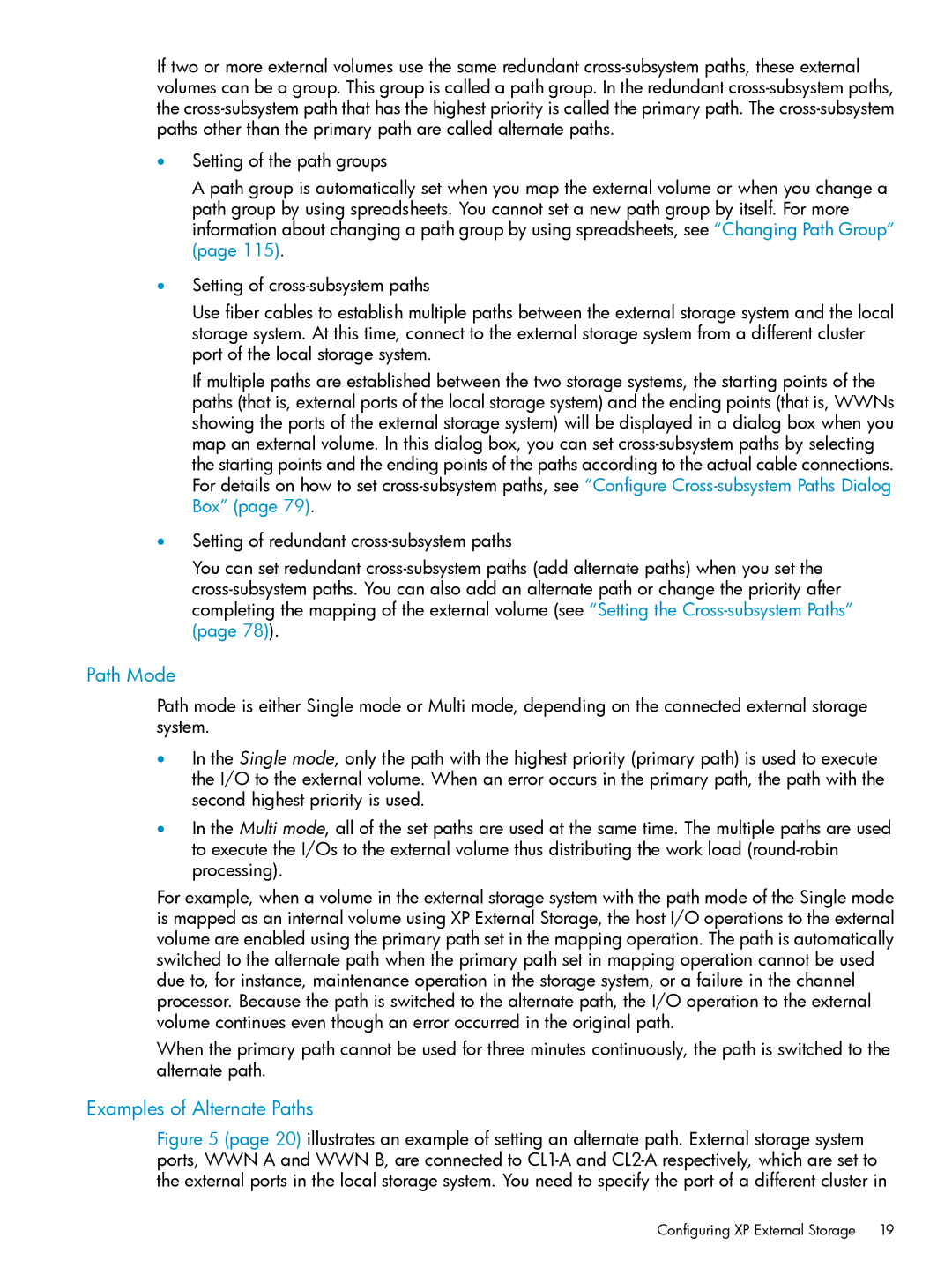If two or more external volumes use the same redundant
•Setting of the path groups
A path group is automatically set when you map the external volume or when you change a path group by using spreadsheets. You cannot set a new path group by itself. For more information about changing a path group by using spreadsheets, see “Changing Path Group” (page 115).
•Setting of
Use fiber cables to establish multiple paths between the external storage system and the local storage system. At this time, connect to the external storage system from a different cluster port of the local storage system.
If multiple paths are established between the two storage systems, the starting points of the paths (that is, external ports of the local storage system) and the ending points (that is, WWNs showing the ports of the external storage system) will be displayed in a dialog box when you map an external volume. In this dialog box, you can set
•Setting of redundant
You can set redundant
Path Mode
Path mode is either Single mode or Multi mode, depending on the connected external storage system.
•In the Single mode, only the path with the highest priority (primary path) is used to execute the I/O to the external volume. When an error occurs in the primary path, the path with the second highest priority is used.
•In the Multi mode, all of the set paths are used at the same time. The multiple paths are used to execute the I/Os to the external volume thus distributing the work load
For example, when a volume in the external storage system with the path mode of the Single mode is mapped as an internal volume using XP External Storage, the host I/O operations to the external volume are enabled using the primary path set in the mapping operation. The path is automatically switched to the alternate path when the primary path set in mapping operation cannot be used due to, for instance, maintenance operation in the storage system, or a failure in the channel processor. Because the path is switched to the alternate path, the I/O operation to the external volume continues even though an error occurred in the original path.
When the primary path cannot be used for three minutes continuously, the path is switched to the alternate path.
